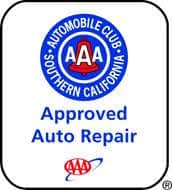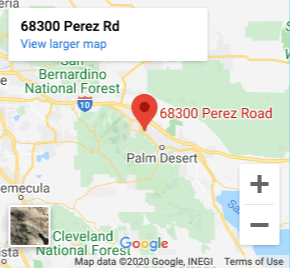Your car has a dashboard light that comes on whenever something goes wrong with the engine. What does it mean? How important is it?
If your car has an engine light on, it means that something is wrong with the engine. The light might come on because of a problem with the ignition system or the fuel injection system. In some cases, the light might indicate a serious issue such as a cracked head gasket or a blown head gasket.
Engine lights are usually very important. They let you know whether your vehicle is safe to drive. If the light stays on, it means that your vehicle isn’t running properly and you should take it to a mechanic immediately.
Types of Engine Lights
The following list includes some of the most common problems that can cause the engine light to illuminate. However, not all engine lights are caused by these issues. Some may be due to other factors. For example, if your car has a check engine light, this doesn’t necessarily mean there is a problem with the engine. It could just mean that the computer needs to run some diagnostic tests before it will allow you to start up your car again.
There are many different types of engine lights. Each type indicates a specific problem. Here are some examples:
• Check Engine Light (CEL) – This light appears when the computer detects a malfunction in one of the sensors located around your engine.
• Malfunction Indicator Lamp (MIL) – This light appears whenever the computer detects a malfunction.
• Low Fuel Level Warning (LFLW) – This light appears to warn drivers about low levels of gas in their tanks.
• Service Engine Soon (SES) – This light appears after the computer determines that the timing belt needs to be replaced.
• Oil Pressure Warning (OPW) – This light warns drivers that they need to change the oil in their vehicles.
• Anti-Lock Brake System (ABS) – This light appears anytime the ABS system senses a potential accident.
• Airbag Deployment (ADB) – This light appears during airbag deployment.
• Electronic Throttle Control (ETC) – This light appears if the computer detects a malfunction with the throttle control.
• Excessive Emissions (EXE) – This light appears at times when the emissions system malfunctions.
• Overheated Engine (OHE) – This light appears every time the computer detects overheating in the engine.
• High/Low Water Level (HWL) – This light appears only when the water level in the radiator falls below a certain point.
• Battery Voltage Warning (BVW) – This light warns that the battery voltage is too low.
• Vehicle Speed Sensor (VSS) – This light appears in cars equipped with VSS systems.
• Ignition Switch (IS) – This light appears on vehicles with IS systems.
• Clutch Pedal Position Sensor (CPPS) – This light appears while the clutch pedal is being depressed.
• Power Steering Fluid Temp Sensor (PSFS) – This light appears as the power steering fluid temperature rises above a specified value.
• Idle Air Control Valve (IACV) – This light appears for any reason that causes the IAC valve to open.
• Coolant Temperature Sensor (CTS) – This light appears because the coolant temperature exceeds a specified limit.
• Heater Core Temperature Sensor (HTCS) – This light appears due to a high core temperature.
• Keyless Entry Remote Start (KERS) – This light appears once the remote keyless entry system detects a malfunction.
• Door Ajar Alarm (DAA) – This light appears any time the door alarm sounds.
• Tire Pressure Monitoring System (TPMS) – This light appears each time the tire pressure sensor detects a loss of pressure.
• Head Gasket Failure (HGF) – This light appears even though the engine is still working properly.
What Causes An Engine Light To Illuminate?
An engine light can appear for many reasons. Sometimes the light is illuminated simply because the computer has detected a minor malfunction. Other times, the light will illuminate because there is a major malfunction.
• Cracked Head Gaskets: The most common cause of an engine light illuminating is a cracked head gasket. When this happens, the engine will not start and the light will remain on until the mechanic replaces the head gasket.
• Blown Head Gaskets: Another common cause of an engine warning light is a blown head gasket which occurs when the metal ring around the top of the cylinder head cracks or breaks.
• Failing Fuel Filter: One other possible source of an engine light is a failing fuel filter. If the filter becomes clogged, then the engine won’t be able to get enough fuel to run.
• Bad Spark Plugs: A third possibility for an engine light is bad spark plugs. If one or more of the spark plug wires become loose, they could short out causing the engine light to illuminate.
• Poorly Installed Wiring Harness: A fourth potential source of an engine light could be poorly installed wiring harnesses. If the electrical connections between the various components are not made correctly, the engine light may illuminate.
• Low Oil Pressure: Finally, another possible source of an engine warning light could be a low oil pressure condition. If the oil pump fails, then the engine light will illuminate.
The Importance Of Checking Your Engine Light
The importance of checking your engine light cannot be overstated. Many people ignore their engine light thinking that nothing is wrong. However, if the light remains on for an extended period of time, it could indicate a serious problem that needs immediate attention.
• If the light flashes rapidly, it could signify a serious problem. For example, if the light flashes every second, it could mean that a component in the ignition system is burning up.
• If the engine light is constantly lit, it could signal a serious problem. For instance, if the light is always on, it could mean that the battery is dead or the alternator is broken.
• If the engine light is on but the engine doesn’t seem to be operating, it could mean that there is a problem with the fuel injectors or the air intake manifold.
• If the warning light comes on while driving down the road, it could mean that your vehicle is losing power.
Checking Your Engine Light
There are several ways to check your engine light. First, you should look at the engine compartment under the hood. You’ll want to make sure that all of the fuses are good and that none of them have been removed. Next, you should turn off the engine by depressing the clutch pedal. Then, you should remove the key from the ignition switch so that you don’t accidentally start the engine. After you’ve done these things, you should visually inspect the engine. Look at the headlights to see if they’re working properly. Check the brake lights to see if they work. Also, check the horn to ensure that it works. If everything looks okay, then try starting the engine again. If the light still comes on, then you probably have a serious problem that requires immediate repair.
If you are looking for a trusted auto repair shop in Cathedral City, then look no further than Davies Auto Care. We offer affordable auto repair services at our location in Cathedral City. We know how important it is to keep your vehicle running smoothly. That’s why we make sure to provide top-quality auto repair services at reasonable prices. Call us today to schedule an appointment.





